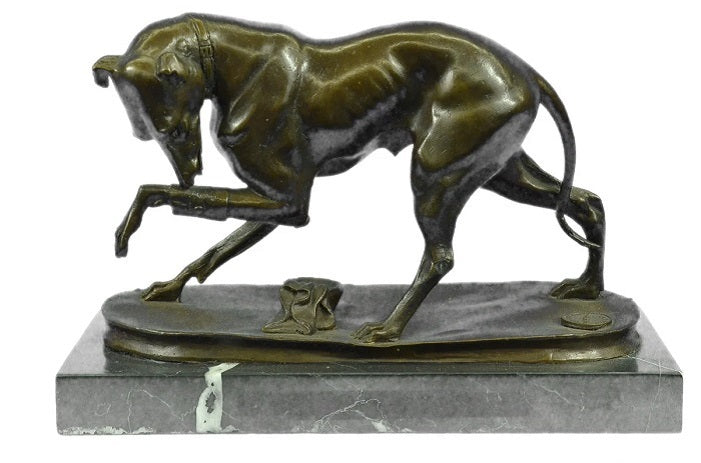A trip around the world of bronze art sculptures reveals a wealth of artistic expression, cultural relevance, and historical background. Bronze sculptures come in a variety of shapes and sizes, each with a unique narrative to tell. They are highly valued for their robustness, ageless appeal, and expressive qualities. Bronze sculpture encompasses a wide range of interesting subjects, from lifelike depictions of historical personalities and ordinary scenes to majestic sculptures that capture the essence of mythological animals and ancient gods. Come us as we explore the many kinds of bronze art sculptures, each providing a different window into human artistic history.
Sand Casting Technique
Sand casting stands as one of the earliest and simplest methods for crafting bronze sculptures. Artisans fashion a mould or pattern using compacted fine sand, into which molten bronze is poured through a series of channels, allowing it to fill the mold. As the metal cools, it solidifies, forming the desired shape. While this method is widely used, it lacks precision and scalability, as molds are not reusable of these bronze art sculpture, necessitating the creation of a new mold for each casting.
Lost Wax Technique
The lost wax casting process, or cire perdue, dates back to ancient times and was prevalent in civilizations like Greece, Rome, and China. In this method, sculptors create a wax model of the final sculpture, then encase it in clay to form a mold. The wax is melted away, leaving a negative space that molten bronze can fill. Once the metal cools and hardens, the mold is broken, revealing the bronze art sculpture.
Solid Casting

Indoor bronze statues solid lost wax casting is a meticulous process that begins with the creation of intricate wax models meticulously sculpted by skilled artisans. Once the wax model is complete, it is encased in a layer of clay or another suitable material, forming a protective mold around the delicate wax form of a bronze art sculpture.
The entire assembly is then subjected to heat, causing the wax to melt away, leaving behind an empty space precisely shaped like the original model. This cavity serves as a negative impression into which molten bronze is poured, filling every detail and contour of the sculpture. While this direct method of casting is relatively straightforward and yields highly detailed results, it often leads to the production of smaller sculptures due to the practical constraints imposed by the materials used in the molding process.
Hollow Casting
The hollow lost wax method, pioneered by the Ancient Greeks, revolutionized the creation of bronze sculptures by addressing the limitations posed by size constraints. This innovative technique involves the initial crafting of a clay model, meticulously sculpted to embody the desired form of the final bronze sculpture.
Once the clay model is prepared, it is meticulously coated with layers of wax, creating a delicate yet resilient outer shell. Surrounding this wax-covered model, sculptors apply an additional layer of clay, forming an outer mold that encapsulates the entire structure. The assembly is then subjected to heat, causing the wax to melt away and leaving behind a hollow cavity within the clay mold. This void serves as a receptacle for the molten bronze, which is carefully poured into the space left by the melted wax.
As the bronze cools and solidifies, it assumes the intricate details and contours of the original clay model, resulting in a strikingly detailed hollow bronze sculpture. One of the key advantages of this method is its ability to facilitate the creation of larger sculptures, as the hollow interior reduces the overall weight of the piece while maintaining structural integrity. Additionally, the reuse of clay models allows for the efficient reproduction of sculptures and has contributed to the method's enduring popularity among modern sculptors seeking to imbue their creations with both artistic vision and technical precision.
Conclusion

As we conclude our journey through the diverse world of bronze art sculpture, we find ourselves enriched by the myriad of forms, stories, and cultural expressions they encompass. From the grandeur of monumental sculptures to the intricacy of small-scale figurines, each type of bronze art sculpture carries with it a unique narrative and aesthetic appeal.
Whether inspired by mythology, history, nature, or daily life, bronze art sculpture serve as timeless reminders of human creativity, ingenuity, and imagination. As we continue to explore and appreciate the wealth of bronze sculpture,t us be inspired by the beauty and significance they bring to our lives and communities, connecting us across time and space through the universal language of art. Further, if you want to buy a bronze statue you can check out the European Bronze collection.
